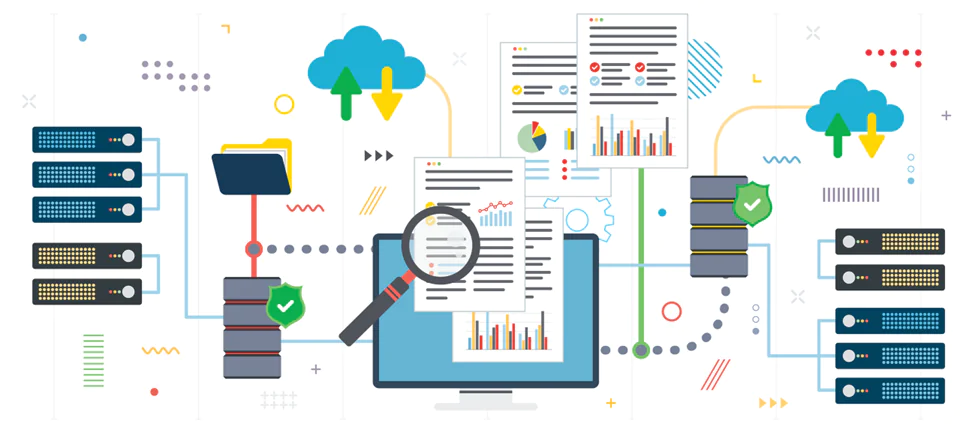Written By: Sudeshna Ghosh
Table of Contents
Introduction
In the dynamic realm of tech development, cloud migration strategies have become crucial for businesses seeking agility and scalability. The Tech Platform Engineering approach is pivotal in this context, driving the implementation of cloud migration processes that cater to diverse business sizes and complexities. This approach is anchored in meticulous planning, encompassing migration strategies that scrutinize the current environment against cloud server requirements. A vital component of this is Application Performance Management (APM), which ensures visibility and seamless performance in the cloud environment, whether it’s public, private, hybrid, or multicloud.
Tech Platform Engineering and Connected Propositions are increasingly essential due to the evolving landscape of public cloud platforms like Google, Azure, and AWS. The focus on apps and data migration, coupled with addressing security concerns and ensuring data backup and recovery, forms the backbone of a successful cloud migration process. As businesses establish their baseline pre-migration performance, they can measure post-move success more effectively.
This article will delve into the transformative power of Tech Platform Engineering, focusing on how it leverages cloud migration strategies to optimize business operations. We’ll explore the cloud migration process, including the Six R’s of migration – rehosting, replatforming, repurchasing, refactoring, retiring, and retaining – and their impact on tech platform optimization. Join us on this journey to understand how Tech Platform Engineering shapes our digital existence and the ways it enables businesses to adapt and thrive in an interconnected world.
Importance of Platform Engineering & Connected Propositions:

The essence of platform engineering lies in its ability to create agile and scalable infrastructures, crucial in today’s cloud-centric world. As businesses engage in interconnected ecosystems, cloud migration strategies like rehosting, replatforming, and refactoring play a significant role. These strategies, from the simple ‘lift-and-shift’ approach to more complex re-architecting, allow businesses to optimize their applications for cloud environments, be it on Google, Azure, or AWS.
In this rapidly evolving tech landscape, having a clear cloud migration roadmap is imperative. Businesses must consider the spectrum of complexity, ranging from virtualized architectures to service-oriented and monolithic mainframe systems. By adopting suitable cloud migration strategies, companies can navigate from low-complexity to high-complexity environments, leveraging cloud-native features for enhanced performance and agility.
Stephen Orban’s insights on cloud migration emphasize the importance of portfolio discovery and planning in the migration process. The ‘5 R’s’ approach – Rehosting, Replatforming, Repurchasing, Refactoring, and Retiring – offers a structured method to manage application migration effectively. This approach helps in identifying which applications to rehost or ‘lift-and-shift’, which to replatform or optimize, and which to repurchase on a new SaaS platform like Salesforce.com or Workday. Refactoring, although complex, enables businesses to fully harness cloud-native features, moving from monolithic architectures to more flexible service-oriented or server-less architectures.
Make the most of your data!
Connect with us for tailor-made solutions
Challenges in a lack of Cloud Migration Solutions:
The absence of effective platform engineering leads to significant migration challenges, especially when transitioning to cloud environments. Without a well-structured cloud migration process, businesses face issues such as data loss, downtime, and difficulties in resource management. These challenges are exacerbated in complex migrations involving public, private, hybrid, or multicloud environments.
One of the critical challenges is ensuring smooth application migration to cloud providers like Google, Azure, or AWS. This requires careful planning and testing to avoid potential downtime and data loss. IT professionals need to establish trust in the migration process by ensuring interoperability between old and new systems and managing resource allocation efficiently.
Moreover, businesses often struggle with visibility into their cloud environment, which is essential for maintaining application performance management (APM) post-migration. Establishing a baseline premigration performance and continuously monitoring post-move success are crucial steps often overlooked. Businesses should utilize tools like Business iQ to keep track of hosting costs, agility, scalability, and other vital metrics post-migration.
In conclusion, navigating the challenges of cloud migration requires a strategic approach that includes comprehensive planning, testing, and resourcing. Selecting the right APM provider can instill confidence in the process, ensuring a successful transition to the cloud.
Key Benefits of Implementing Platform Engineering:

Implementing platform engineering provides a host of benefits, particularly in the context of cloud migration strategies. By adopting the Six R’s of Migration – Rehosting, Replatforming, Repurchasing, Refactoring, Retiring, and Retaining – businesses can optimize their cloud migration process, balancing operational needs with strategic goals.
One of the main benefits is the transition to an elastic infrastructure, which offers significant cost savings and enhanced agility. By moving to cloud environments like Google, Azure, or AWS, businesses can experience decreased infrastructure footprints, improved disaster recovery, and enhanced security measures.
Moreover, platform engineering facilitates a smoother application migration to the cloud, ensuring minimal downtime and data loss. It enables IT professionals to efficiently manage resources and gain the trust of stakeholders by ensuring a smooth transition. With the right cloud provider and a well-executed migration strategy, businesses can overcome the common challenges of cloud migration.
In summary, platform engineering offers elastic infrastructure, cost savings, improved agility, and enhanced security, making it a critical component of successful cloud migration strategies.
What Do Our Platform Engineering Solution and Connected Proposition Offer?
Our platform engineering solution, designed for cloud migration, offers a comprehensive and strategic approach to the migration process. We focus on the Cloud Migration Roadmap, which addresses the size and complexity of the migration. Our basic steps include planning, choosing the right migration strategy, understanding the current environment, and determining cloud server requirements.
The solution emphasizes Application Performance Management (APM) to maintain visibility in the cloud environment, whether it be public, hybrid, private, or multicloud. We support migrations to major cloud providers like Google, Azure, and AWS, ensuring that apps and data migration is secure and efficient. Our solution addresses common security concerns and includes data backup and recovery strategies.
We implement the Six R’s of Migration – Rehosting, Replatforming, Repurchasing, Refactoring, Retiring, and Retaining – to provide a tailored approach to each migration scenario. These strategies range from basic ‘lift-and-shift’ (rehosting) to more complex processes like refactoring for cloud-native features.
Our platform engineering ensures that post-migration, businesses can measure success using tools like Business iQ. We assist in establishing baseline premigration performance and monitoring post-move success, ensuring benefits like elastic infrastructure, hosting cost optimization, agility, and scalability are fully realized.
In conclusion, our platform engineering solution for cloud migration is comprehensive, covering every aspect of the migration process. It ensures businesses migrate efficiently and securely to the cloud, leveraging the benefits of cloud computing to achieve operational and strategic business goals.

Conclusion:
In today’s rapidly evolving technological landscape, platform engineering and connected propositions are critical for businesses aiming to optimize their cloud migration strategies. These approaches provide a robust foundation for transitioning to cloud environments, addressing the complexities of planning, migration, and post-migration management.
Platform engineering, especially in the context of cloud migration, offers significant advantages. It ensures smooth transitions to cloud environments like Google Cloud, Azure, or AWS, with minimal disruption and maximum efficiency. Connected propositions, on the other hand, bring coherence to this process, ensuring that every aspect of migration, from security to application performance management, is aligned with the business’s overall goals.
In essence, embracing platform engineering and connected propositions is not just about leveraging technology; it’s about transforming the way businesses operate and compete in a cloud-first world. It’s a strategic move that enables organizations to harness the full potential of cloud computing, driving innovation, efficiency, and growth.
Make the most of your data!
Connect with us for tailor-made solutions
FAQs:
- What is Platform Engineering in the Context of Cloud Migration? Platform engineering involves strategizing and implementing cloud migration processes, including planning, choosing the right migration strategy, and ensuring efficient Application Performance Management (APM) in various cloud environments.
- How Does Cloud Migration Benefit Businesses? Cloud migration offers numerous benefits, including elastic infrastructure, cost savings on hosting, enhanced agility, scalability, improved disaster recovery, and security. It enables businesses to adapt quickly to market changes and reduce their physical infrastructure footprint.
- What are the Six R’s of Cloud Migration? The Six R’s of Cloud Migration are Rehosting, Replatforming, Repurchasing, Refactoring, Retiring, and Retaining. These strategies range from simple rehosting to complex refactoring for cloud-native features, providing flexibility in the migration approach.
- What Challenges Can Arise During Cloud Migration? Challenges in cloud migration include managing downtime, preventing data loss, resource management, ensuring interoperability between cloud environments, and handling security concerns. Proper planning and execution are vital to overcome these challenges.
- What Role Does Application Performance Management Play in Cloud Migration? Application Performance Management (APM) is crucial in maintaining visibility and performance of applications in the cloud. It helps in monitoring and managing the applications post-migration to ensure they perform optimally in the new cloud environment.
- How Does Platform Engineering Support Cloud Migration? Platform engineering provides a structured approach to cloud migration, ensuring smooth transition of applications and data to the cloud. It involves meticulous planning, execution, and post-move management to maximize the benefits of cloud computing.


